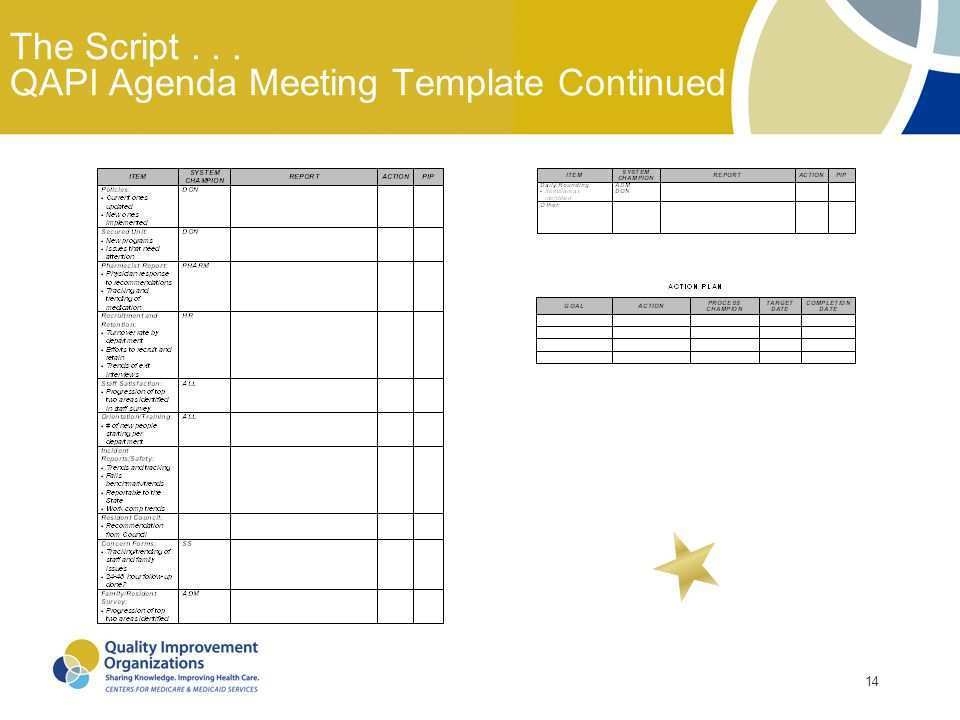Quality Assurance and Performance Improvement (QAPI) meetings are essential for healthcare organizations to continuously improve their processes and outcomes. One of the key components of these meetings is documenting the discussions, decisions, and actions taken. Meeting minutes serve as a record of what was discussed and agreed upon, ensuring accountability and transparency within the organization.
It is important to have a standardized format for recording QAPI meeting minutes to ensure consistency and clarity. Here are some examples of what could be included in the minutes:
1. Date and Time: Start the minutes by stating the date and time of the meeting to provide context for the discussions that follow.
2. Attendees: List the names and roles of all attendees present at the meeting, including members of the QAPI team, department heads, and any other relevant stakeholders.
3. Agenda Items: Outline the topics that were discussed during the meeting, along with any presentations or reports that were shared. This provides a clear structure for the minutes and helps readers understand the flow of the meeting.
4. Decisions and Actions: Document any decisions that were made during the meeting, as well as the specific actions that need to be taken to implement those decisions. Assign responsibilities to individuals or teams to ensure accountability.
5. Follow-Up Items: Include a section for follow-up items, detailing any tasks that need to be completed before the next meeting. This helps ensure that action items are not forgotten and progress is tracked effectively.
By following these examples and including all relevant information in the meeting minutes, healthcare organizations can demonstrate their commitment to continuous improvement and quality care. Regularly reviewing and updating these minutes can also help identify trends, areas for improvement, and successes within the organization.
